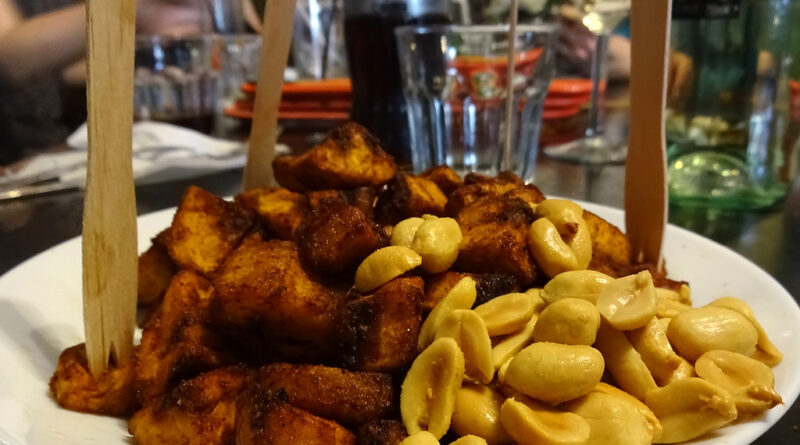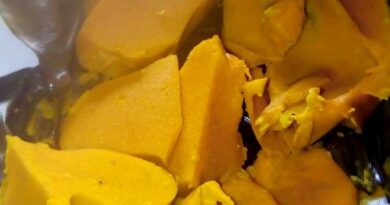Kelewele
Embracing the Sweet and Spicy Delight of Kelewele: A Culinary Journey through Ghana’s Iconic Street Food
Introduction: In the bustling streets of Ghana, amidst the vibrant culture and rich traditions, there’s a culinary delight that captures the hearts and taste buds of locals and visitors alike. Kelewele, a beloved street food, is more than just a snack – it’s a symbol of Ghanaian heritage, blending sweet and spicy flavors into a tantalizing treat. Join me on a journey through the history, ingredients, preparation, and cultural significance of this iconic dish as we explore the world of Kelewele.
- Origins and History: Kelewele traces its origins to Ghana, where it has been a cherished part of the culinary landscape for generations. Its roots can be traced back to the Ga people, an ethnic group in the Greater Accra Region of Ghana. Originally, Kelewele was made from plantains, a staple crop in West Africa, and it was often prepared as a way to utilize ripe plantains that were too soft for other dishes.
Over time, Kelewele evolved from a simple snack into a cultural phenomenon, becoming a staple of Ghanaian street food culture. Today, you can find Kelewele being sold by vendors on street corners, in markets, and at roadside stands throughout the country.
- Ingredients and Preparation: The beauty of Kelewele lies in its simplicity. The key ingredient is ripe plantains, which are peeled and cut into bite-sized pieces. These pieces are then seasoned with a blend of spices, typically including ginger, garlic, cloves, and sometimes chili powder or cayenne pepper for an extra kick.
Once seasoned, the plantain pieces are fried until they are golden brown and crispy on the outside, with a tender, sweet interior. The aroma of the spices fills the air as the Kelewele cooks, enticing passersby with its irresistible scent.
- Flavor Profile: What sets Kelewele apart is its unique combination of sweet and spicy flavors. The sweetness of the ripe plantains is perfectly complemented by the warmth of the ginger and cloves, while the garlic adds a savory depth to the dish. The addition of chili powder or cayenne pepper provides a subtle heat that lingers on the palate, balancing out the sweetness and adding an extra layer of complexity to the flavor profile.
- Cultural Significance: Beyond its delicious taste, Kelewele holds deep cultural significance in Ghana. It is not just a snack but a symbol of community and tradition. In many Ghanaian households, making Kelewele is a family affair, with multiple generations coming together to prepare and enjoy this beloved dish.
Kelewele is also an integral part of Ghanaian street food culture, providing employment opportunities for vendors and serving as a gathering place for friends and neighbors to socialize and connect. It embodies the spirit of Ghanaian hospitality, welcoming all who pass by to partake in its flavorful delights.
- Variations and Innovations: While the classic recipe for Kelewele remains popular, there are endless variations and innovations to explore. Some vendors may add their own twist to the traditional recipe, incorporating ingredients like onions, bell peppers, or even pineapple for a unique flavor experience. Others may experiment with different cooking methods, such as grilling or baking, to create their own take on this iconic dish.
- Conclusion: In conclusion, Kelewele is more than just a snack – it’s a culinary masterpiece that embodies the spirit of Ghanaian culture and tradition. From its humble origins to its widespread popularity today, Kelewele has captured the hearts and taste buds of people around the world, inviting them to experience the sweet and spicy delights of Ghanaian street food.
Whether you’re savoring it on the streets of Accra or trying your hand at making it at home, Kelewele is sure to leave a lasting impression. So the next time you find yourself craving a snack that’s both comforting and adventurous, why not give Kelewele a try? Your taste buds will thank you for it.



